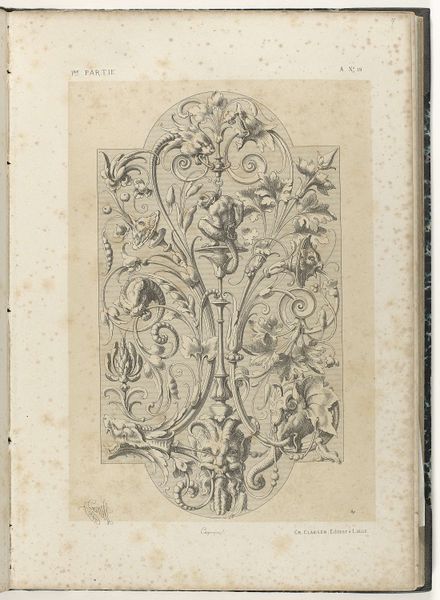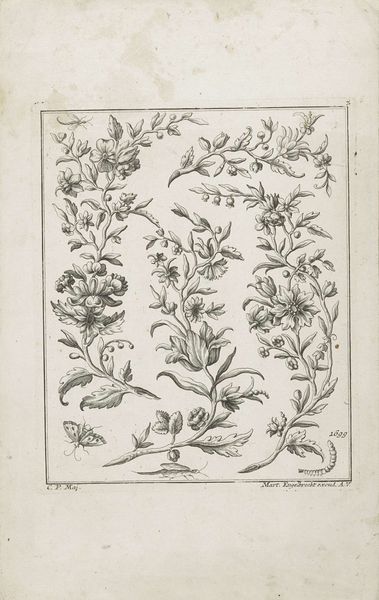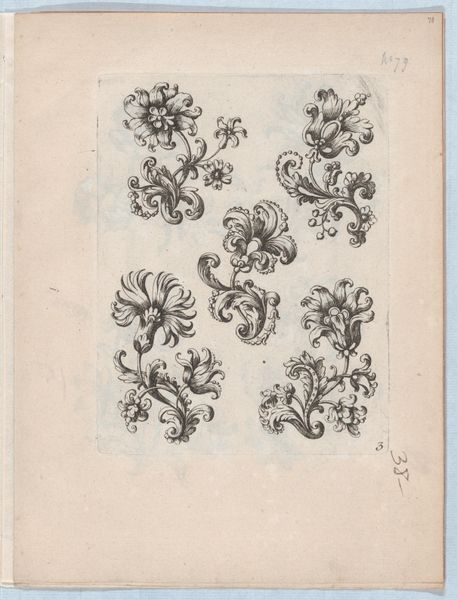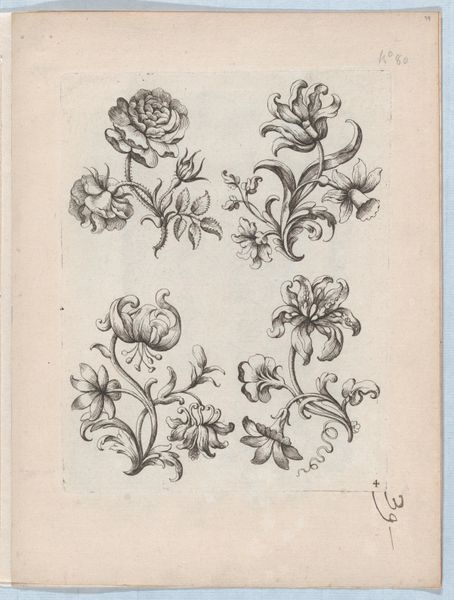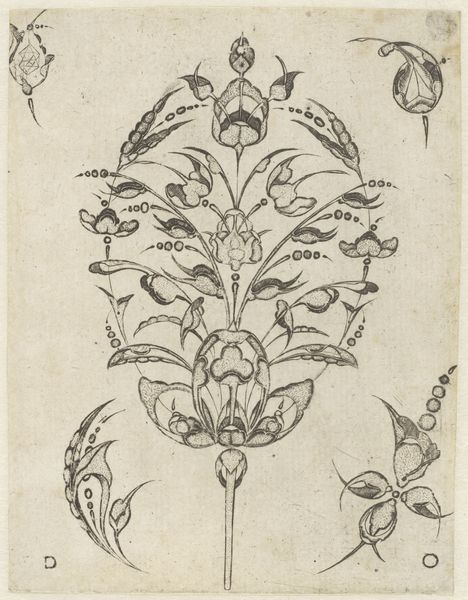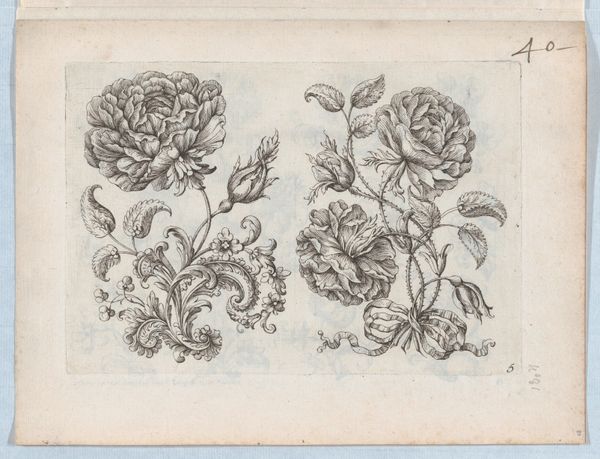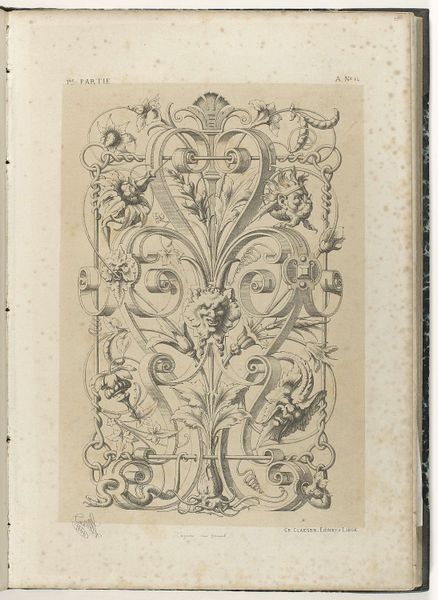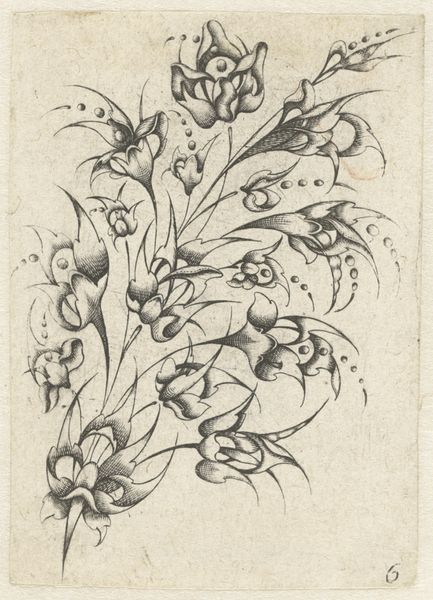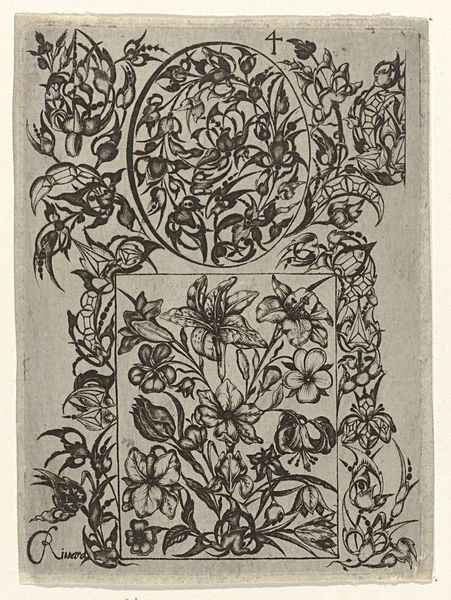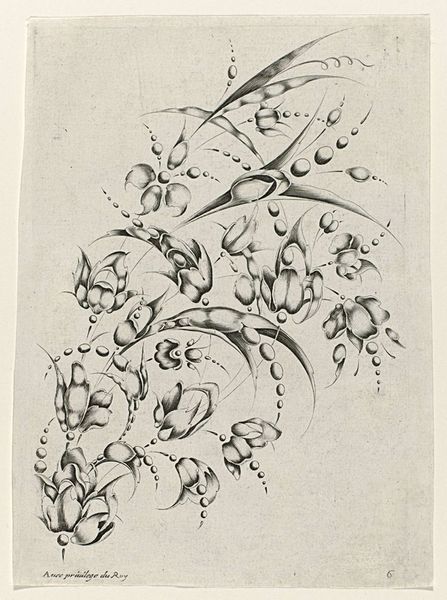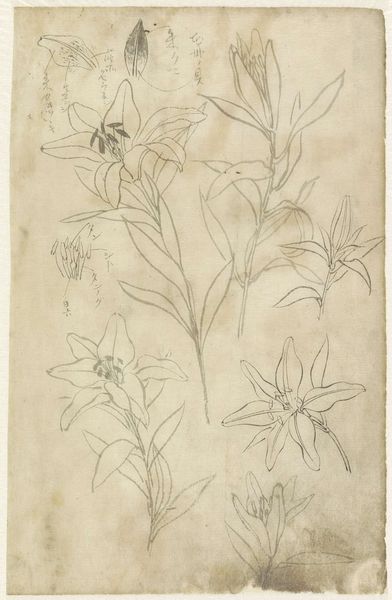
drawing, paper
#
drawing
#
paper
#
line
#
watercolour illustration
#
decorative-art
#
botanical art
#
watercolor
Dimensions: height 418 mm, width 290 mm
Copyright: Rijks Museum: Open Domain
Curator: I find this design really elegant; it has a calming effect. Editor: Let's explore this design, titled "Tak met gestileerde bladeren en bloemen," which translates to "Branch with stylized leaves and flowers." It's a drawing created by Michel Liénard in 1866. The piece employs a delicate use of watercolor on paper. Curator: Seeing that, it makes me consider how pattern books played such a significant role in the 19th century. Someone must have labored over these designs, considering material costs, application techniques, and the final manufactured product. Was this a blueprint for fabric? Or maybe wallpaper? Editor: Precisely. Decorative arts like this flourished as social values shifted in response to industrial production, highlighting artistry as a way of life in domestic spheres. Notice how the floral pattern almost symmetrically grows from a central stem, embodying balance and harmony. Curator: That speaks to how industrial processes could disseminate visual culture so broadly and cheaply, fundamentally changing taste. How accessible would such elaborate botanical designs have been previously, and to whom? Editor: Before the 19th century, creating these stylized florals on a large scale for various uses simply wouldn't have been possible. But now, suddenly, these elaborate designs became integral to mass visual culture. Curator: But beyond dissemination, Liénard’s original artistic labor matters. Did he design for a particular market? I imagine factors like his patron and location, or prevailing style all impacting material choice and application technique. Editor: Absolutely. Liénard's choice of medium, watercolor, might point toward its ease of reproduction. Curator: Looking at it now through the lens of our time, it shows how aesthetic choices intertwine so closely with economics and distribution. What once was bespoke craft gradually transformed into mass production—accessible art available for purchase. Editor: Indeed, and its aesthetic echoes through various decorative arts today. So thank you, Michel Liènard! Curator: A fascinating case study! It beautifully showcases the dance between craft, mass production, and the democratization of aesthetics.
Comments
No comments
Be the first to comment and join the conversation on the ultimate creative platform.
